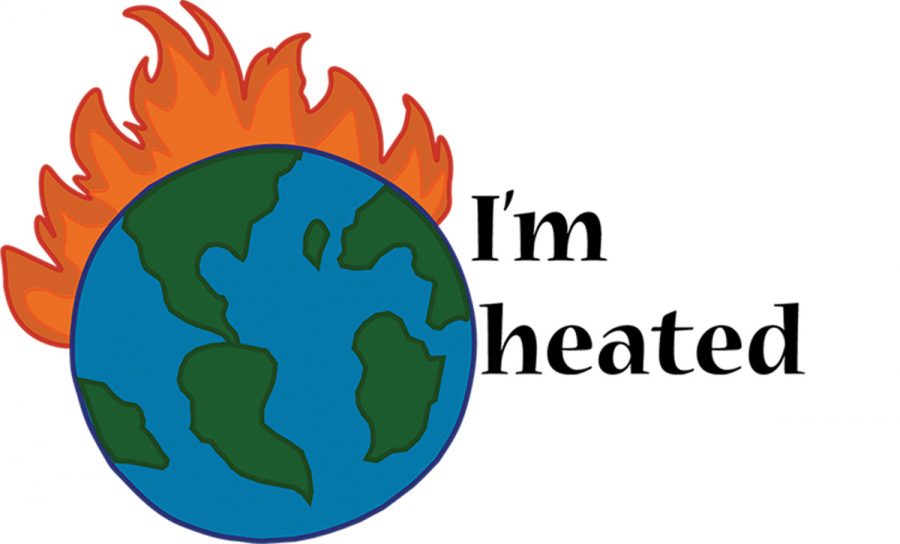I’m heated
Plastic pollution is trashy and I’m sick of it
More stories from Emilee Wentland
Last weekend, I grabbed a Snapple Mango Madness juice from a shelf in Target and went to put it in my cart. As I was walking, I noticed a banner across the label that read, “New plastic bottle!”
I shouted, “What? This is the opposite of progress!” and nearly threw the bottle across the store.
Needles to say, I was heated. I love Snapple’s glass bottles because plastic is horrible for the environment. Reluctantly, I bought the tea and carried on about my day. But since then, I can’t stop thinking about plastic usage.
Less than nine percent of the 8.3 billion metric tons of plastic produced on this planet — from 60 years ago until 2017 — has been recycled, according to National Geographic. Roughly 79 percent of the plastic not recycled is in landfills or crowding the ocean somewhere, National Geographic reported. If we keep this up — which seems likely — there will be more plastic in the ocean than fish by 2050, as stated in the World Economic Forum.
Here’s another not-so-fun fact: Although straws are plastic, they are not recyclable.
500 million plastic straws are used in United States every single day, according to Ecocycle. Basically, every person in the U.S. is using 1.6 straws every day, which is ridiculous. All this plastic pollution for something people don’t even need. Newsflash: We don’t need straws; our mouths are perfectly capable of drinking just fine on their own.
Speaking of useless things: Let’s talk about takeaway meals.
I’ll admit it: I pretty much live off of grande soy lattes and spicy potato tacos (read: literal garbage) — both of which I grab while I’m on the run from place to place. Calories and fat content aside, fast food is terrible because if we’re repeatedly buying takeaway food, we’re causing landfills to fill up.
Let’s say I order my spicy potato taco, a fresco-style Crunchwrap Supreme and an orange creamsicle freeze (It’s Happier Hour in this scenario, obviously). There’s going to be a paper bag, some napkins, the papers they use to wrap my tacos, a plastic cup and a straw. That’s a lot of packaging and most of it can’t even be recycled. The paper bag and the plastic cup can, but the taco wrappers, napkins and straw would have to be thrown away.
Fast food packaging can be blamed for about 40 percent of litter, One Green Planet reported. The National Resources Defense Council found that fast food chains, such as Dunkin’ Donuts and KFC are wasting $11.4 billion a year by not making their products easy to recycle.
In a report titled “Waste and Opportunity 2015,” they rated chain companies on their packaging sustainability and put them into categories such as “Better Practices” or “Needs Improvement.”
According to Greenbiz, the study rated both Starbucks and McDonald’s with “Better Practices.” Chipotle and Panera got “Needs Improvement” and Dairy Queen and Domino’s were rated “Poor.” The love of my life, Taco Bell, was deemed to need improvement, which breaks my heart, but doesn’t shock me.
So, what can we do? How do we fix this?
Probably the easiest way is to stop using straws. You don’t need them, they’re causing mouth wrinkles, and most importantly, they’re clogging up landfills. Buying foods in bulk is another way to cut down on packaging. If you’re going to buy Snapple Mango Madness in a plastic bottle, for instance, purchase a giant bottle of one rather than a single-serving sized one.
If you kick the Taco Bell habit, you’re body won’t be the only one thanking you. Instead of day after day of throwing away packaging, you could pack your own lunch in reusable containers that you can take to work/school/wherever with you.
One of the easiest — and my personal favorite — ways to cut down on plastic consumption is by bringing a reusable bag to the grocery store. You can buy them pretty much everywhere, they’re fun and sometimes they save you a nickle or two. When I go grocery shopping, I can easily use 2-3 plastic shopping bags, and not every store offers paper, so why not splurge on a 99-cent shopping bag next time you’re out and about?
Cutting down on packaging doesn’t need to be hard, folks. There are mindless everyday things we do that can be altered to help the environment, so why don’t we do them?


